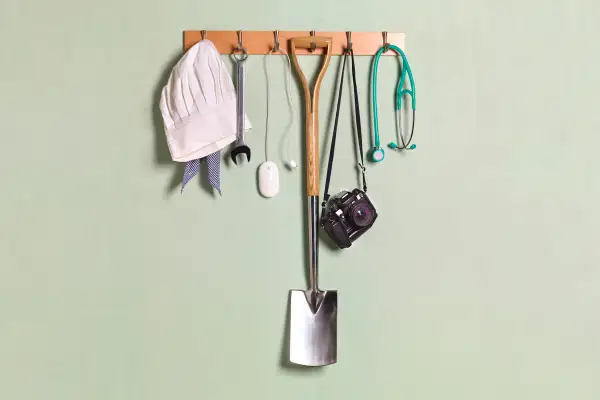How to Start a Side Gig Without Compromising Your Current Job

With lifetime employment a thing of the past, a side gig means you no longer have to rely on your job as the sole source of income. A side gig is also a great way to hone new skills, earn extra money, and have some fun. However, while you’re ramping up your new business, you don’t want to neglect and possibly jeopardize your current job. Here are five things to keep in mind as you start a side venture.
1. Read your HR manual (finally)
Are there published restrictions on working for anyone else? Check your company intranet. Ask a friend in human resources. See if you can find examples of other employees who have side gigs of their own. (You want to learn the official policy—just because the company hasn’t enforced the rules doesn’t mean they won’t start with you.) Check for conflicts of interest. If, for instance, you’re working for an advertising agency and start a marketing consulting side gig, your employer might argue that you’re competing with its business. If there are no restrictions and no conflicts, launch away. If there’s a possibility of objections, talk to your manager. It’s better that your bosses hear from you directly, and you might even get a verbal go-ahead.
2. Bring your own devices
Even if you get your employer’s blessing, never use the company’s equipment for your side gig. Don’t use its email address or phone number, and bring your own laptop. Are you planning to print advertising flyers? Don’t use the company copier—it could muddy the ownership rights. If you use company equipment to create something for your side gig, even if it’s the result of your creativity and effort, your employers may argue that the output belongs to them.
3. Set clear time and place boundaries
Just as you shouldn’t use company hardware and services for personal projects, it’s not wise to engage in side gig activities on company time or at the company location. If you’re seeing clients, don’t meet in the office conference room, even if it’s your lunch break. If you have to take a 3pm call related to your side gig, take a shorter lunch. You want to have a clear delineation between your side project and your current job so you don’t even give the appearance that you’re slacking off at work and funneling your energy elsewhere.
4. Share your newfound energy
You'll likely have an abundance of energy for your side gig—the newness, the potential, the creativity. Share some of that energy with your current employer by doing an even better job than usual. You definitely want to preserve the vast majority of your energy for the side gig—you’ll need it. But think of your newfound on-the-job sparkle as a way to bank some good will for the future. If you’re doing an even better job, your boss won’t have anything to complain about, and may even encourage your side gig or offer more flexibility as you need it.
5. Be ready to explain yourself
If your side gig and current job ever collide, know in advance how you’re going to deal with conflicts. For example, if you’re at the office holiday party and your senior management mentions that your boss told them about your side gig, how will you respond? You want to have something interesting to say about your outside work, but also balance it with something interesting you’re doing in your current job – otherwise they'll think your head and heart belong elsewhere.
Read next: How to Compete for Freelance and Permanent Jobs at the Same Time
If your boss puts you on a project that requires late, volatile hours that cut into your side gig, how will you resolve this? You want to decide in advance how willing you are to give extra time to your current job now that you have another project. If your side gig starts to grow and you need flexibility, are you willing to ask your boss for that? Decide how far you want to take the side gig. You may change your mind down the road, but an initial plan will at least give you some structure.
It’s absolutely feasible to juggle a side gig with a full-time job. It’s even preferable in that it removes the pressure on the side gig to make money right away. It also could give you a brighter attitude toward your day job, allowing you to perform better than before. Just make sure you take precautions so you succeed at both, rather than pit one against the other.
